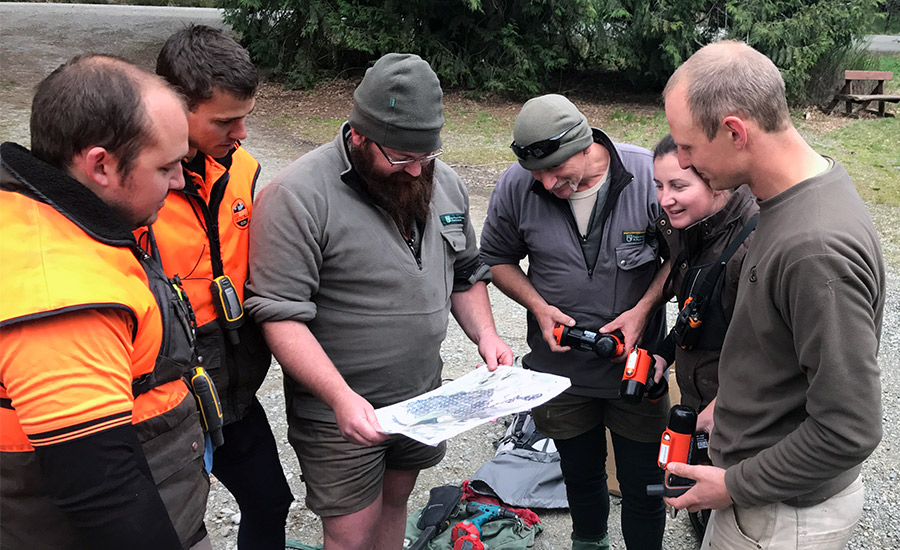
New joint project to protect our native bats
A new collaborative project will protect the endangered South Canterbury pekapeka long-tailed bat population from predators in the Raincliff area.
This week staff from Environment Canterbury, the Department of Conservation and forestry company Port Blakely, have begun setting 200 predator traps on Port Blakely’s land – to help boost the local bat population by removing possums, rats, weasels and stoats from the area.
Reducing predators to support the local bats
Environment Canterbury Biodiversity Officer Rob Carson-Iles says the focus on reducing predators should really help support the local bats, which are one of the largest colonies on the east coast of the South Island.
“Although bats roost off the ground, up in trees, these predators are more than able to find their roost trees and kill both adults and pups. Reducing introduced predators is key to the health of this extraordinary native species.”
Self-resetting traps, funded by Environment Canterbury for the next two years, are being placed around bat habitats using GPS to pinpoint locations. They are placed 100 metres apart for rats and 200 metres apart for possums and stoats.
The long-tailed bat is classified as endangered-nationally critical by the Department of Conservation. In South Canterbury, they are found within a triangle from Geraldine to Cave and down to Temuka with a total population of only 2,300 in six separate colonies. The Raincliff forest is one of the largest colonies of bats in South Canterbury.
Working together to save the bat population

Helen Risk, Land Management & Biodiversity Advisor for Environment Canterbury, says collaboration with both the Department of Conservation and the landowners means the project will be much more effective.
“Collaboration extends the reach of what we can do alone – even just the time in physically getting the traps out in the thick bush is much reduced with three separate organisations giving time towards this.”
Landowners, from Port Blakely, have already carried out some early possum control and will also contribute towards the servicing of the traps, in collaboration with Department of Conservation staff and Environment Canterbury staff.
Andrew Cocking, Regional Manager at Port Blakely, says his organisation is committed to protecting the bats into the future.
“Port Blakely is keen to support this project as we are lucky enough to have these special little creatures making their home in our environment and want to ensure their population grows and is supported.”
South Canterbury's unique bat population
Bats are nocturnal mammals that hibernate during the winter months. They are protected by the Wildlife Act 1953. Most remaining bat populations are associated with extensive native forest. South Canterbury is unique because this is one of the few places where bats have persisted in a rural landscape.
Bats are dependent on old-aged trees that provide nooks and holes for breeding. They prefer to roost in the native trees that are now scarce. However, they will roost in introduced trees that are allowed to get old and large enough for natural cavities to form.
